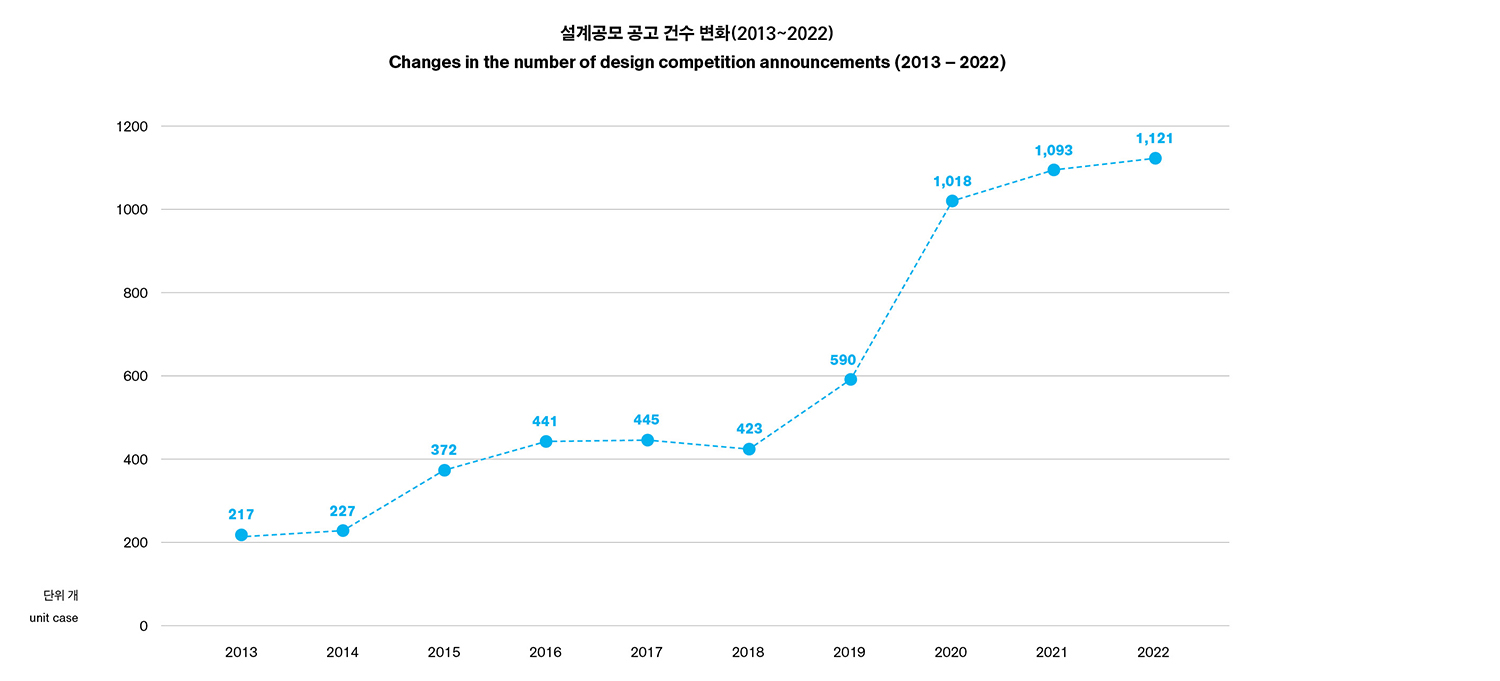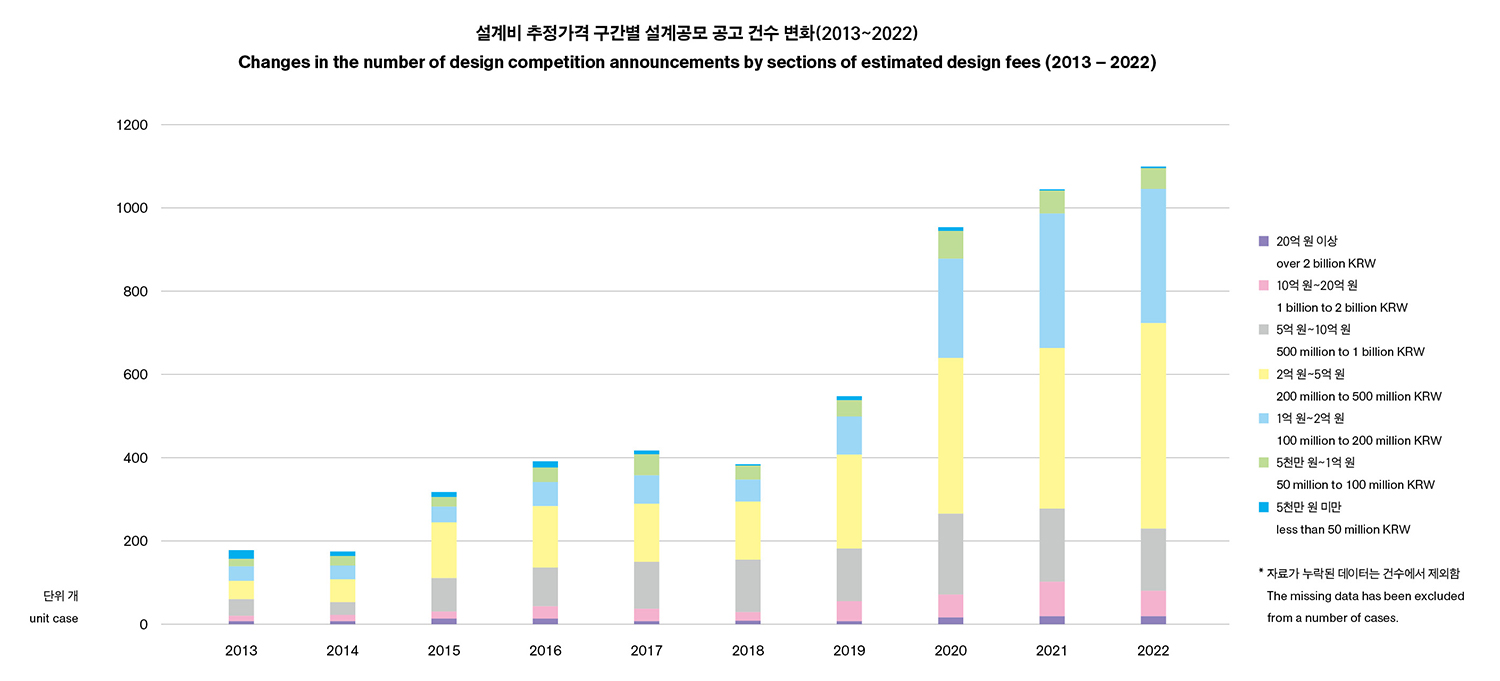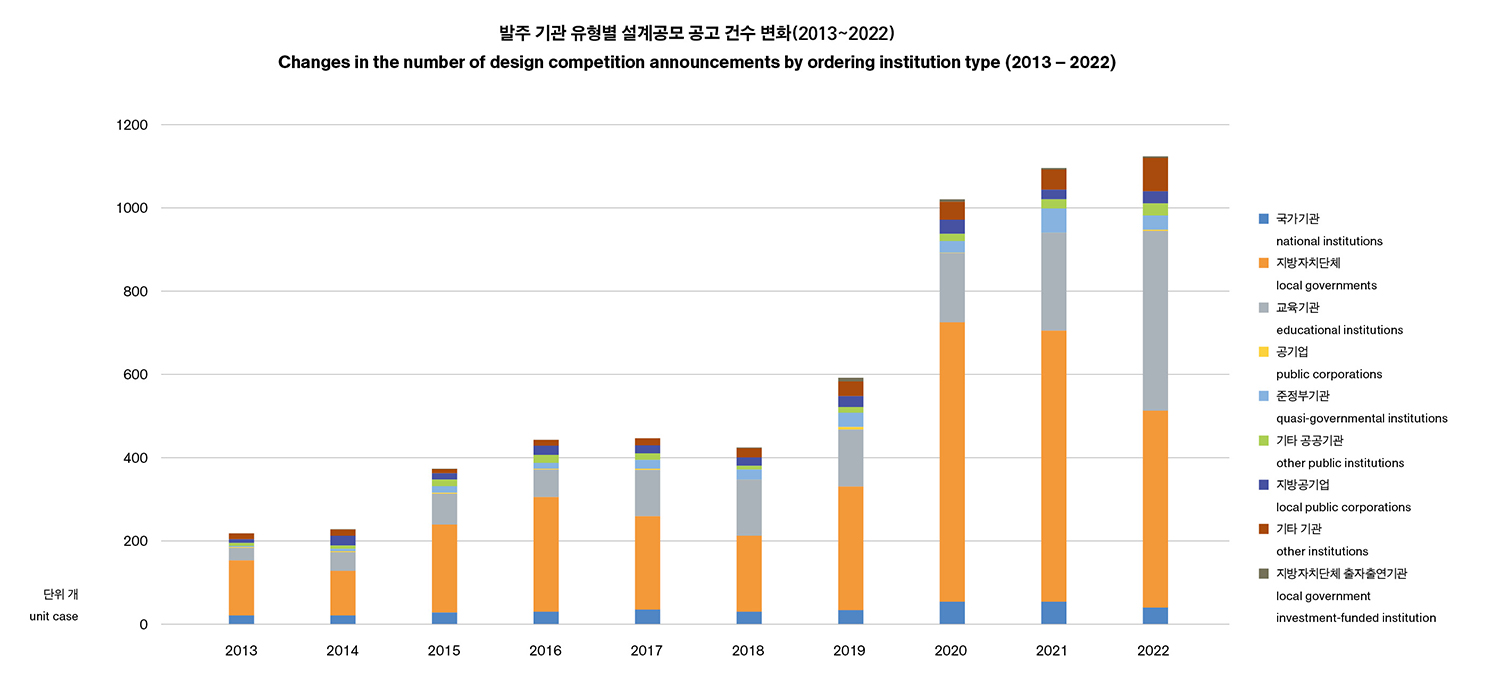SPACE November 2023 (No. 672)
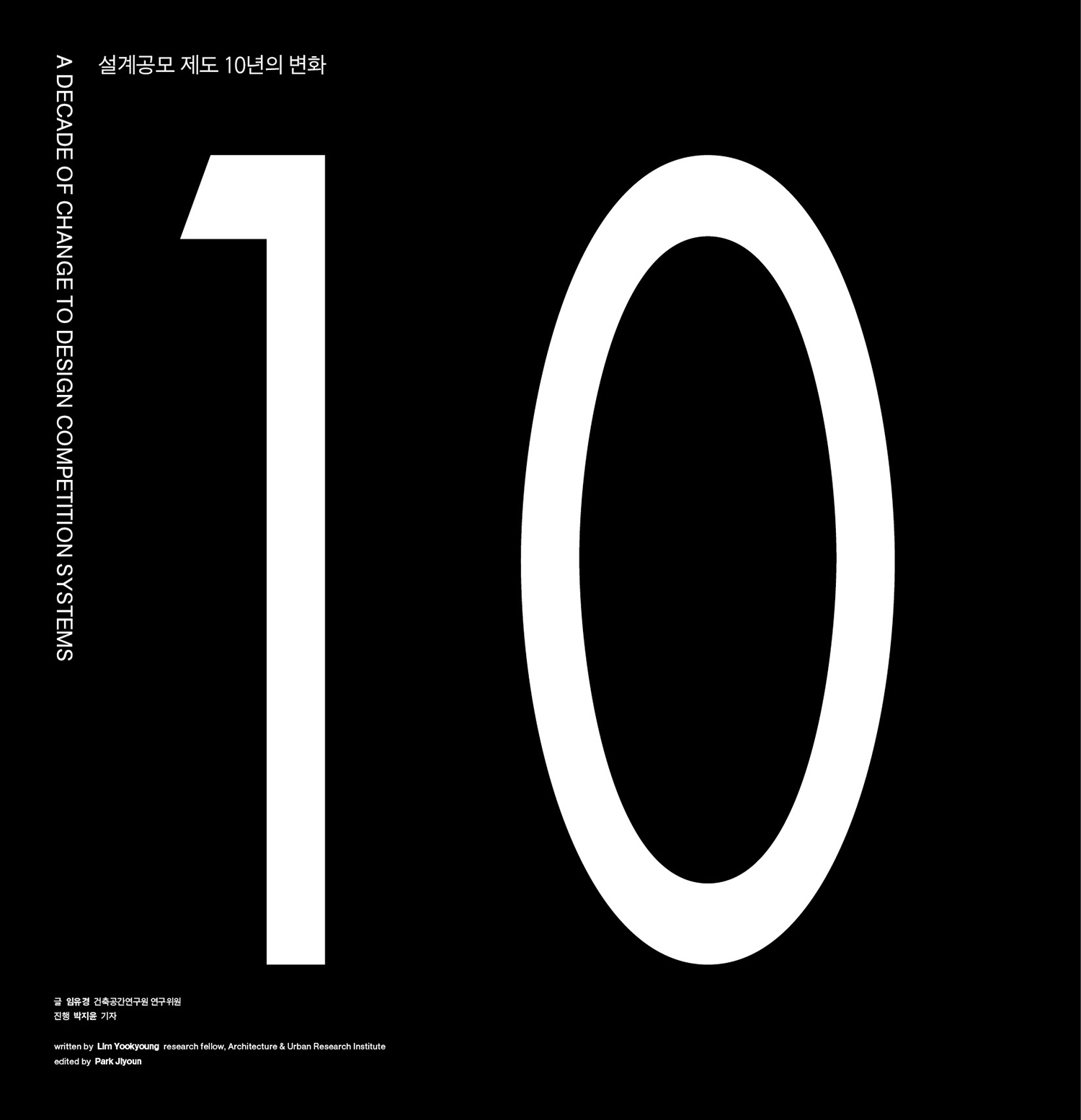
REPORT
Systems - The introduction of a preliminary application system for design competitions and an expansion of their subjects
Since the 1960s, design competitions have been the means behind the construction of major public buildings such as the Government Complex Seoul (1966), National Assembly Building (1968), and Seoul Citizen Hall (1973). However, the system governing the process was not fit for purpose. It was not until the 1990s that the basis for promoting design competitions was detailed in the legislation. In January 1995, the Construction Technology Management Act Article 21-2 (Construction Technology Competitions) was established, and in August of that year, the focus of competitions in the enforcement decree of the same act was stipulated as ‘construction works or construction technology services that the ordering agency recognises as requiring creative approaches and new or specialist technologies, such as symbolism, monumentality, and increased aesthetic value.’ In July of the same year, the Enforcement Decree Of The Act On Contracts To Which The State Is A Party was approved, providing the basis for establishing a negotiated contract with the winner of a design competition (Article 26). Enacted in 2007, the Framework Act On Building stipulated that ‘national and local governments as well as public institutions will conduct design competitions to select excellent architectural and spatial environment designs.’ In other words, the methodology that sits behind design competitions should be applied across the sector to improve the quality of a wider range of public buildings beyond those specific buildings requiring innovation or a more expressive character.
Approved in 2013, the Act On The Promotion Of Building Service Industry Article 21, instructs that ‘where a public institution intends to place an order for the design of buildings, etc. [...], it shall use a public competition as the preferred method for placing orders.’ At the time of the enactment of the same act’s enforcement decree, the subjects of the preliminary application for design competitions were buildings with an estimated design fee of more than the notified amount (approximately 200 million KRW), and in January 2019, the enforcement decree was amended to expand the scope of subjects of the preliminary application to include buildings with an estimated design fee of more than 100 million KRW. As a result, small-scale public buildings such as daycare centres and 911 safety centres, as well as extensions to the school classrooms and gymnasiums and remodelling projects, have also been included as the subjects of design competitions.
The Act On The Promotion Of Building Service Industry includes measures to internalise the public building construction process, such as a preliminary review, etc. of public building project plans and the establishment of a public building support center, in addition to the operation of design competitions. In 2018, the Act was amended to add further stipulations such as making architectural planning compulsory, requiring the establishment of public building deliberation committees, and the establishment of local public building support centers, with the aim of increasing the efficiency of building projects and enhancing the public value and design quality of buildings. Along with the enactment of and the amendments made to the Act, a number of connected institutions were also established. In 2013, the National Public Building Center (NPBC) was founded at the Architecture & Urban Research Institute (auri), which was designated as a public building support center by the Ministry of Land, Infrastructure and Transport. Starting with the Seoul Metropolitan Government, Busan Metropolitan City, Chungcheongnam-do, Seoul Metropolitan Office of Education, and Gyeonggido Office of Education, 11 local public building support centers have been established and are in operation as of October 2023.
Changes in the system between 2013 – 2023
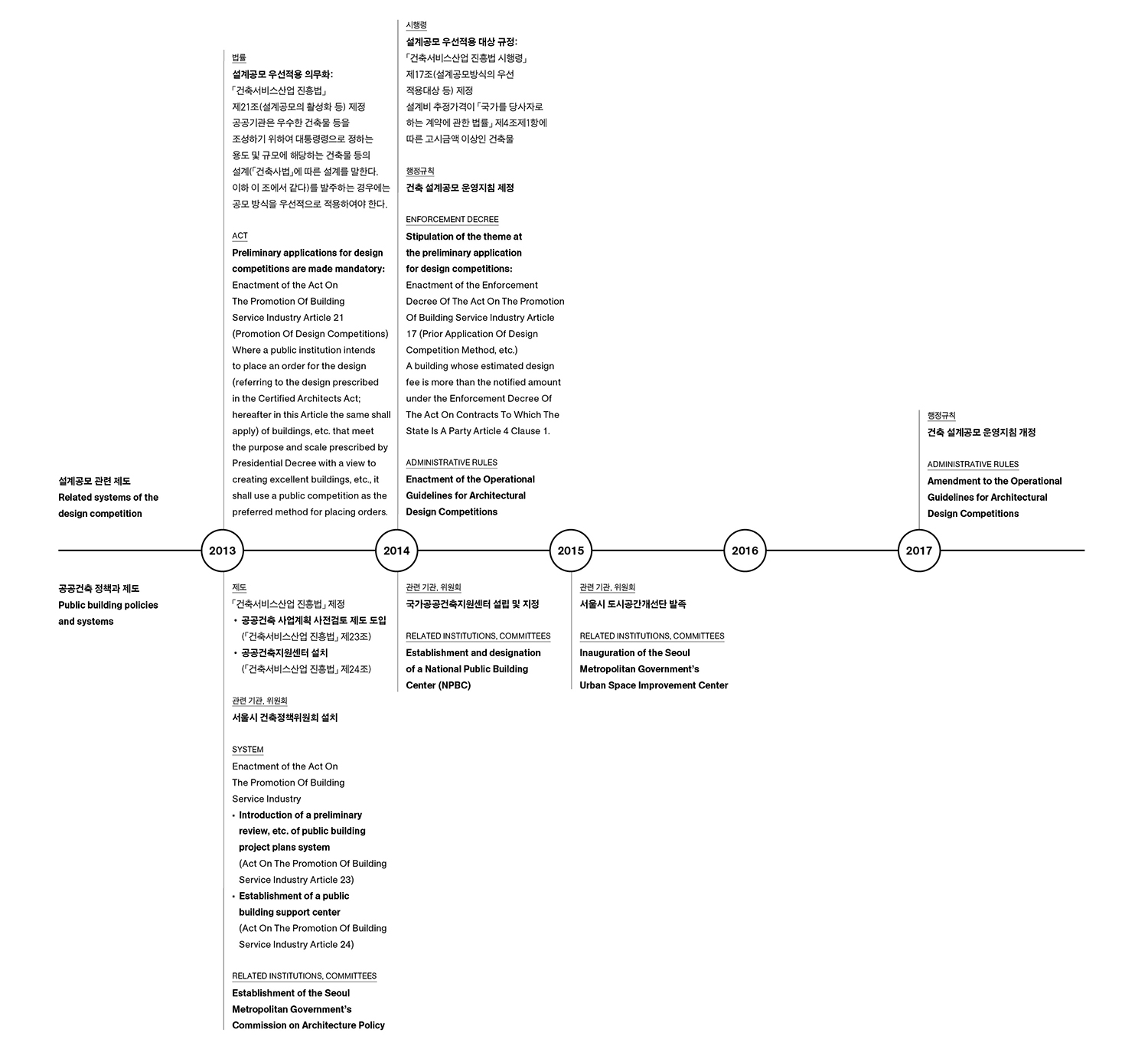
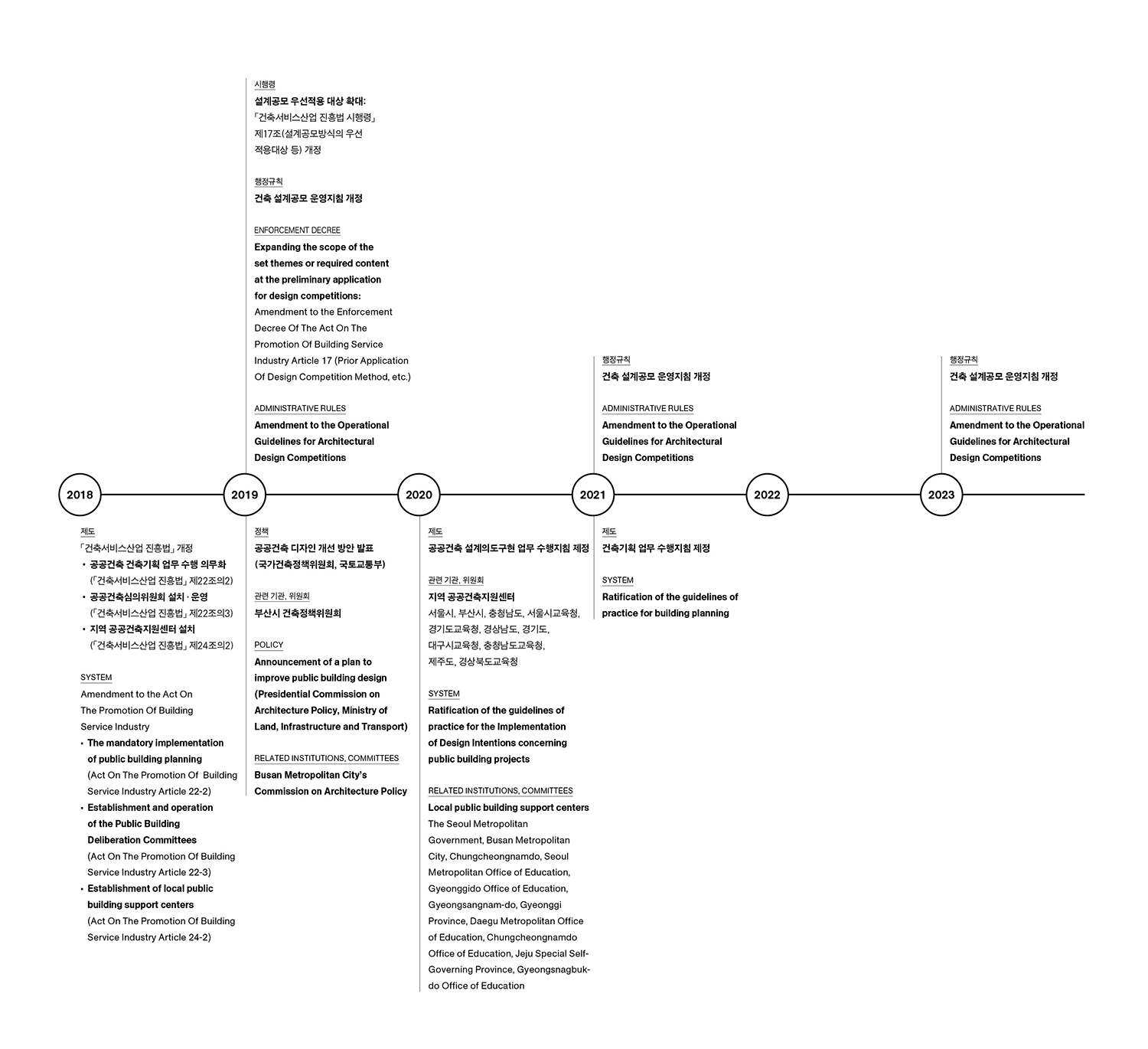
Current Status
